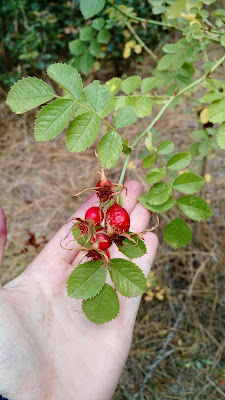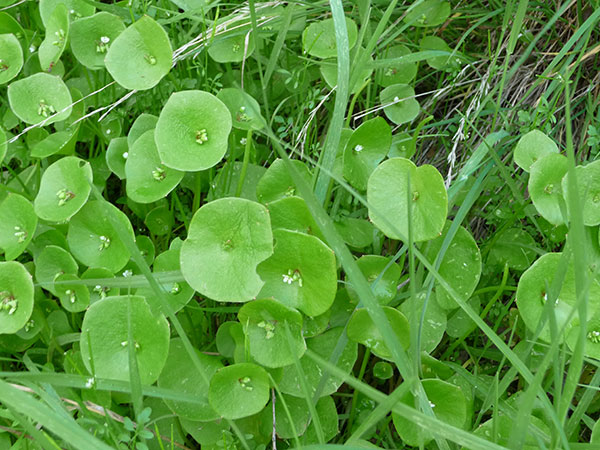My information comes in part from tradition passed down from generations of hunter/gatherers in my family, and part experience, along with academic study of books like this.
Learning what edibles are out there in your neighborhood and surrounding wilderness is as simple as One. Start with one edible. Learn about that one native plant first: where it grows, how it grows, where to find it, local spots you know it to grow, when does it taste the best. Why start with one? Because each plant in each region will behave differently at different times of the year compared to elsewhere. And it can take repeat visits and searches and tastings to learn when this plant is best picked. However, you can get lucky and happen to visit when a plant is plentiful and ripe. The will to explore is all you really need.
Once you have a handle on that plant, search for another target one on your next outing. Eventually, you'll have a working knowledge of edibles in your area. At the very least, you'll be familiar with what plants are around so you can later identify them with a book or biologist. I can't tell you how many times I'm driving along and a familiar plant from my book catches my eyes. I stop, compare it, read what its uses and best times for harvest are, try it, if safe and possible, then either harvest for more testing at home, or take a photograph and leave it.
Foragers tend to harvest wild native edibles. Vegetable garden growing is not the same as wild edible harvesting. As previously discussed in Living Sustainably in the Wilderness, Part 1, common vegetables and seeds at the grocery store are hybridized, imported, abominations (excuse my language) of their ancestral originals. This is not to say all wild plants are truly native, though. Many wild edibles were brought from some other part of the world, and managed to flourish in the wild.
Himalayan blackberry, for instance, came from, you guessed it, the Himalayas, and was brought over by traders and settlers. Most blackberries you find around town are Himalayan. Evergreen are true natives, but are trickier to navigate, in my opinion because the triangular leaves hide thorns.
Evergreen blackberries distinguishable from common Himalayan blackberry by the forked leaflets.
A forager's goal is to harvest free wild edibles, naturally and organically growing in forests, mountains, by lakes, streams, coasts, highlands, lowlands, deserts and roads, regardless where they came from. Vegetable gardens take maintenance. Wild edibles do not, at least not insomuch as you have to plant them and tend them. There is a certain stewardship that goes into being a forager, but foraging is about the search.
I will only discuss the common plants I've seen, so you aren't scouring through acres of forest trying for that one obscure edible.
I will only discuss the common plants I've seen, so you aren't scouring through acres of forest trying for that one obscure edible.
Lavender - There is a lavender shrub 8 ft high on the urban road where I live which blooms 6 months out of the year. I break off the most aromatic flowering bundles of vine-like stems and display them in my home in little jars regularly for a splash of color. When they dry out, I harvest the dried flowers for use in baked goods, as an additive to my bath, or for smelling packets.
This fast growing shrubbery can bloom in harsh conditions. It's quite resilient, and beautiful, which makes it a popular landscaping choice. However, it can grow somewhere wild as well. With lavender, let your nose be your guide. There are many other similar flowering purple-blue plants that don't smell as floral.
Acorns - The unsung heroes of the native world around here, acorns are abundant in the fall, and largely go uncollected. Natives survived off of acorns in these valleys, west of the Rockies. They dried them and crushed them over several months to be used as flour during winter. Just like you can buy almond flour for baking, acorn flour was a staple for local natives. Without acorns to survive the winter, many tribes would starve.
Wild acorns in my area are not puny. They grow to look like pecan shells, long and thick. They fall from tall oaks by the hundreds, covering the ground in sharp broken shells and roley-poley marbles.
The trick to acorns, I'm learning, is once they drop, gather them like crazy! THEN let them dry in the sun or a container for a long period of time (like a year). Natives used last year's harvest to crush into flour for the next year. It was on a constant cycle, like wine. Drink last year's wine while you prepare the grapes for the following year's supply.
Also note that some oak trees produce bigger, tastier nuts than others. I aim for the tall, large oak groves. The older they are, and more water available to them (on valley floors), the more they produce in my area. Gather whole acorns, unbroken, without tiny holes in them from critters.
Walnuts - Walnut trees are a treasure to me because they are otherwise expensive in the stores. They grow sparsely, but where they do, the harvest is plethora. The trick with walnuts is to let them wait on the branches until the outer green fruit is dried and pulls away. That way the walnut inside (like a pit) can be gathered more easily without the need to shuck. Scraping away the green fruit from the pit before it's dried out is tedious and will blacken your hands.
Rosehips - In the late fall and winter, these decorative looking red-orange bulbs highlight every wayside forest road. There is a trick I've discovered for harvesting these. Wait until late in the season when you can squeeze it and the paste-like juice pops out of the top like a pimple. The inner seeds contain fragile, but sharp, irritating hairs like fiberglass splinters.
Rosehip bulbs in fall. I would wait to harvest until after the leaves disintegrate in mid winter, at least in my area of Southern Oregon. Typical harvest is through autumn.
Acquiring the pulp between the outer skin and inner seed pit center can be tedious, and sometimes unsuccessful. Because of this, few people will bother with them, even though they are abundant in certain areas.
If you do manage to gather a significant amount (a tablespoon of juice paste in total would be a success), the flavor and nutritional content (Vitamin A, C, Calcium, dietary fiber) makes it a delicacy in the jarring world. I cooked it in with a blackberry jam. The raw taste reminds me of a low acid, delicate tomato. It's quite pleasing, if you can avoid the thorns of the branches and the splinters in the center. DO NOT try to eat it whole like a berry. You will get a mouthful of splinters from the seeds. Each bulb must be processed, either by boiling the whole harvest, or individually squeezing them in autumn to mid winter (depending on your distance to the equator).
Mother Earth Living describes the many ways to cook and use the parts of the chicory plant:
The young basal leaves taste almost identical to dandelion greens. The white underground parts of the earliest leaves are good in salad or cooked as a potherb.... When cooked, the roots taste like parsnips, but they are almost too skinny to bother with. Instead of boiling them, however, you can scrub them and roast them slowly until brittle and dark brown inside. Grind and brew them like coffee or blend with regular coffee.The one time I harvested a four inch root from the chicory stalk I found, I improperly dried it. Apparently they don't dry well. They become hard and impossible to use. Roasting is the best course, according to years of colonial tradition.
The top of this forested hill, in the dry grasses along the dirt road were chicory stalks, crawling high through the grass like good weeds, easy to overlook.
Crab Apples - I don't care what other people want to say about crab applies. To me, these are mother nature's bounty.
I am not afraid of crab apples. In fact, I love them. With the ten pounds I harvested from local trees I made two pies, two oatmeal bar casseroles, apple jam, and I still had enough as grab-n-go snacks. The great thing about baked goods is you can freeze the leftovers for another month. I prefer to buy food in season. So when I can get an abundance of one food, how mother nature tends to produce, I want to put away goodies for the winter, like a freaking squirrel. Fruits are easy to do that with, whereas greens have to be dried or eaten when fresh.
Miner's lettuce - is everywhere during the spring. My son recognizes it as a lily pad on a stem. He and I both love the refreshing taste of this wild green. It grows in lush fields and valleys, near water sources at the bottom of a slope or on the bank of a stream. More often than not, it's staring you right in the face and you've mistaken it for a weed.
Harvest leaves from untrodden ground not frequented by humans or pets or sprayed with weedkiller. If clean enough, we eat it as we go. This is our favorite wild green.
Mallow - is recognizable by its crumbled looking leaves, more whole than a clover. It might also have a light fuzz that my son enjoys as a texture in his mouth.
This weed is so common, it is probably in your back yard. However, harvest only leaves free of pesticides, road run-off, and dog piss. Wash if suspect.
Always Learning
Foraging is a productive past-time, and way to supplement your income by offsetting your grocery bill. I enjoy these basics because they either give me and my family what we need when we're out wandering, or they are preservable for future months when I can't buy fresh produce.My goal is to someday be self-sufficient on wild edibles, fish, and grown vegetables. In order to do that, I must learn how to accomplish all my food groups and nutritional requirements through nature's provisions. Nut flour was a key I recently discovered.
Foraging is a continuous learning process, as any naturalist will tell you. The seasons change each year because of climate shifts. Rains impact when and if a plant blossoms. You have to constantly be checking. But what I love about the interconnection of all things is how nature will guide me to knowing what is in season. If it's abundant enough, you'll notice it. You just have to explore the land.
Roots will be my next challenge. They are elusive, yet were essential for native cultures.











No comments:
Post a Comment